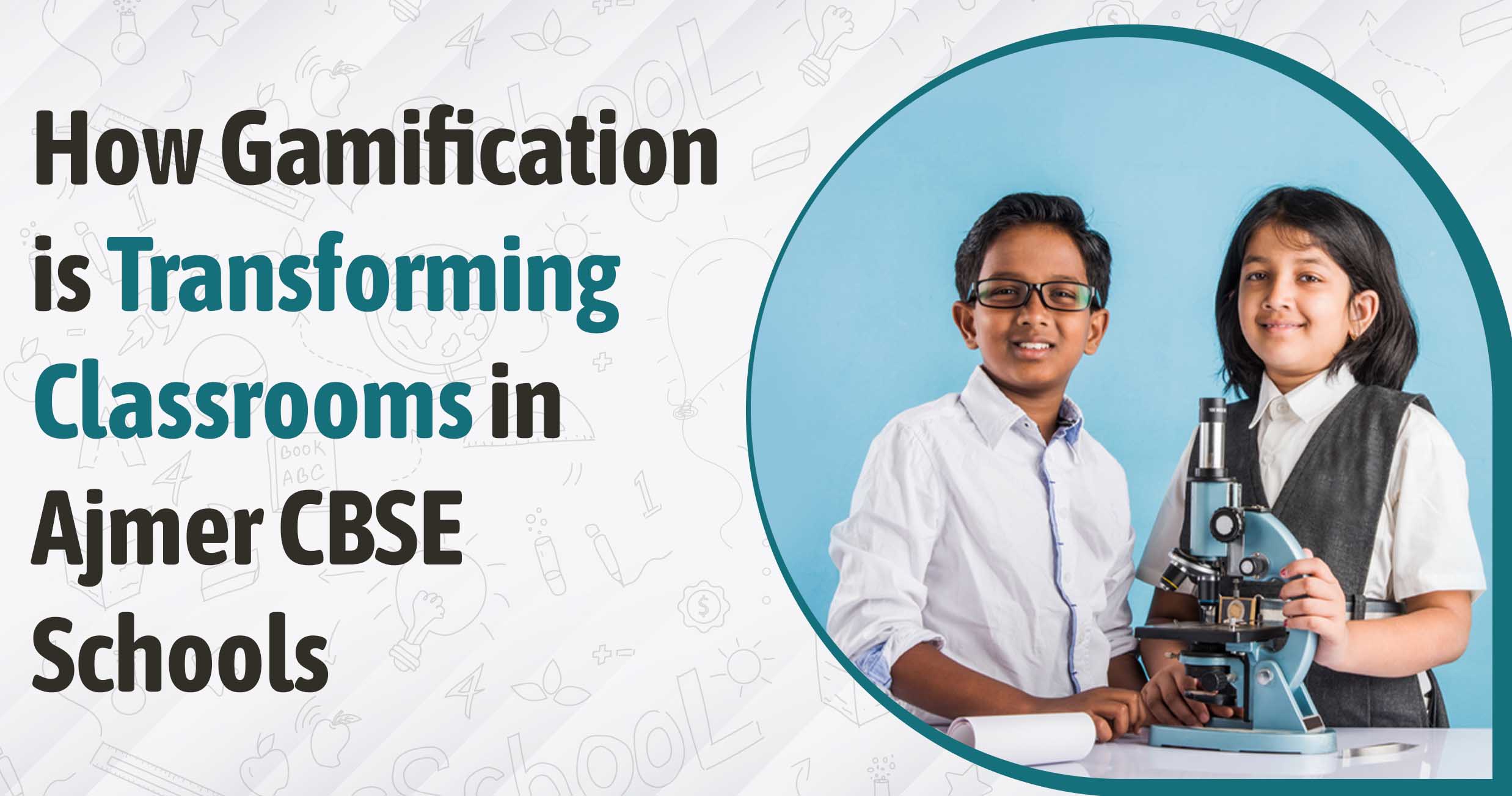
Wouldn’t it be great to walk into a classroom where students are eager to tackle a math challenge, breeze through their science quizzes, and even level up their grammar skills like stars in their favorite video game? Sounds like a dream? Not anymore. With the increasing popularity of gamification in schools, including CBSE board schools in Ajmer, the spirit of the saying above is quickly turning into a reality.
Using gamification methodology – applying game-design elements and game principles in non-game contexts – in education is a revolution. It’s not about playing games all day but changing how students engage with their learning material. And the findings are intriguing.
Kids are, by nature, players. When schooling feels like a game, they are wholly engaged. Students no longer look with dread upon a history lesson or a math assignment. They have become more than passive consumers; they are now active partners prepared to face challenges and share in victories.
Gamification leverages intrinsic motivation: the desire to accomplish, master, and be recognized. Pupils are learning for the grades and working to “beat the level” or “win the badge.” This is a transformation that, done well, leads to a love of learning that can last forever.
CBSE schools in Ajmer are blending unique approaches in regular classroom learning. Products like interactive quizzes, learning apps, and digital storytelling applications have become increasingly popular in today’s classrooms. Classroom participation has become more than just raising a hand; now, it can be gaining points, unlocking achievements, or working with “teammates” to solve a difficult problem.
One great example is the use of leaderboard systems. The ability for students to see their names inching up the board after completing assignments or assisting classmates fosters superior academic performance and openness and engagement with teamwork and communication. It makes learning into a warm, encouraging competition.
The penetration of e-learning has been one of the main contributors to smart classrooms in Ajmer, turning them into game-oriented spaces. Enabled by tablets, smartboards in classrooms, and various apps tailored to the education sector, students can call upon a host of gamified content at the click of a button. The smart classes in Ajmer are not limited to lectures but offer virtual labs, live quizzes, and interactive modules that add life to complex topics.
A history lesson now can take the form of “time-travel missions,” in which students “travel” to ancient civilizations. A chemistry class might have “reaction challenges” in which students make predictions to get virtual rewards. These kinds of things will bring those abstract concepts to life in a memorable way.
Magicos follows the multimodal theory of learning, based on the Advantage Model of Learning and Limitation of Children’s Strategies, where children are seen to possess several strategies but are limited in the deployment of these by their knowledge and understanding.
Accordingly, gamification fosters non-cognitive skills. It develops students to be resilient, critical thinkers with a lifelong love of learning.
Parents fret about screen time – and how tech can be a “distraction.” But when used judiciously, digital tools can also be excellent educational allies. The key lies in balance. Schools are now upping the game by embracing responsible digital learning in Ajmer, in which technology is seen as an extension of – but not a substitute for – traditional learning values.
Modern education trends lead to the development of a “learning ecosystem” where games, experiential elements, and individualized mentoring coexist harmoniously. This is not just about academic performance; it’s about raising people who have a broad way of seeing the world and are prepared for a fast-changing world.
As gamification continues to transform education, parents can anticipate the following:
Satguru International School in Ajmer is one such school that has been a strong proponent of such contemporary and student centric methods. By combining conventional wisdom with innovative teaching methods, Satguru is molding minds of the future to excel in the changing times. They are doing so by embracing smart classrooms and interactive learning modules, driven by the simple philosophy that their students not only learn but learn to love learning.
In a world that’s changing faster than ever, the schools shaping creative leaders are the ones who will shape a new world tomorrow. And gamification is just one thrilling part of that colorful educational mosaic.